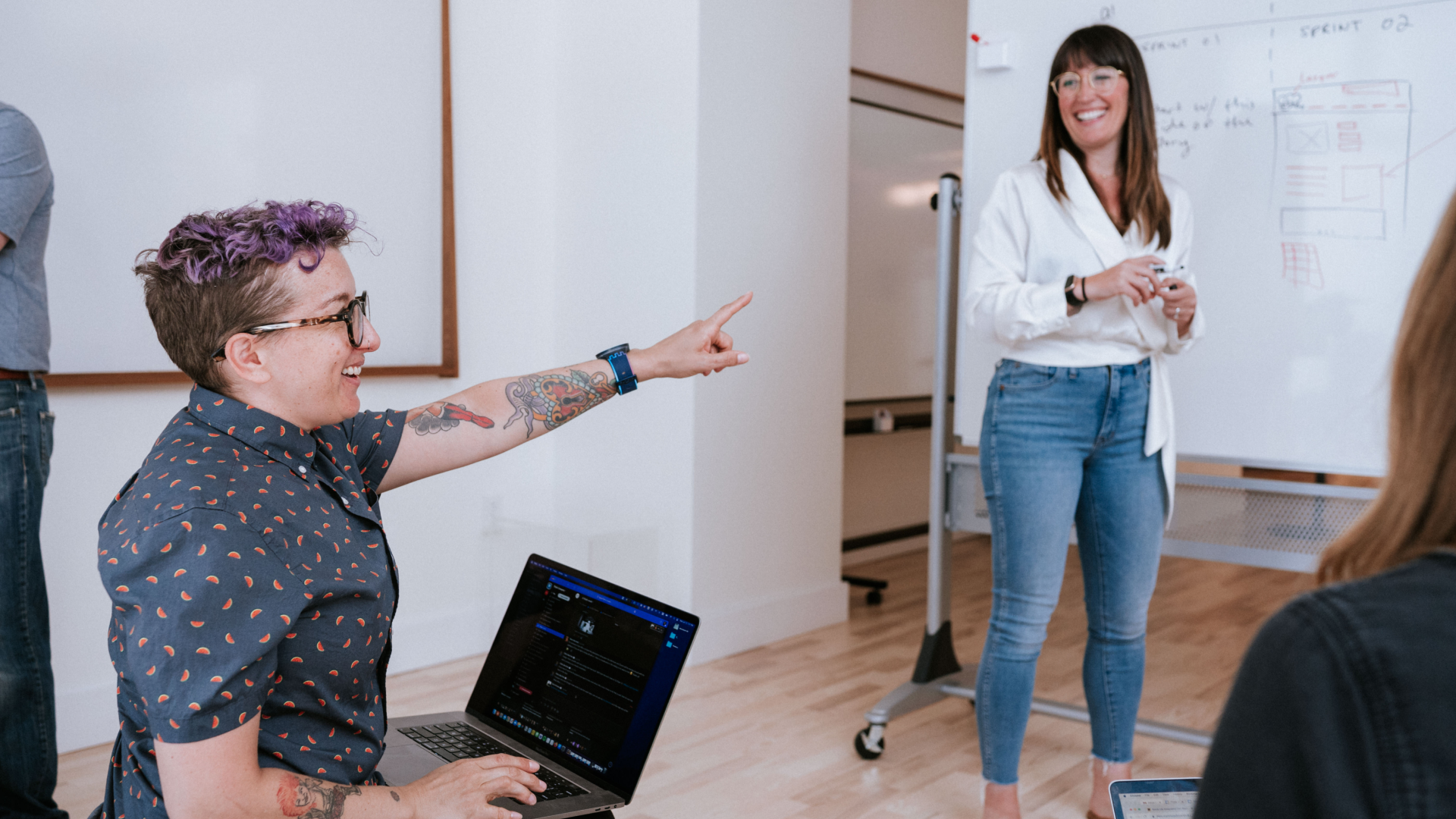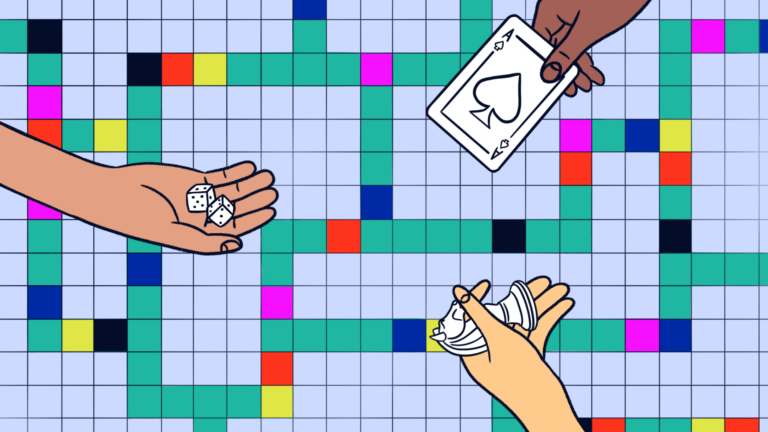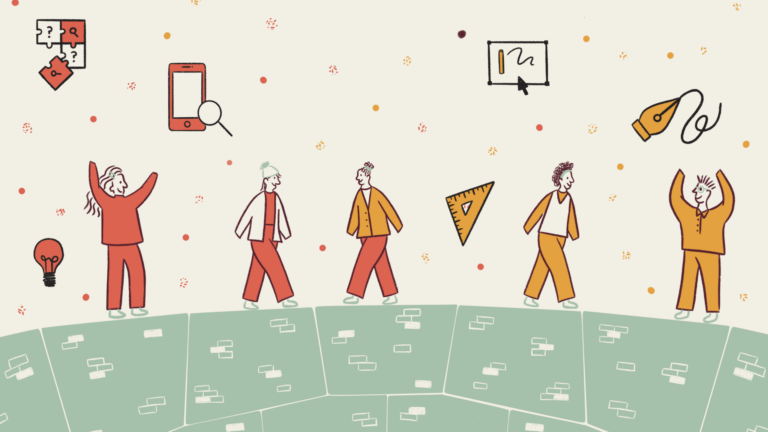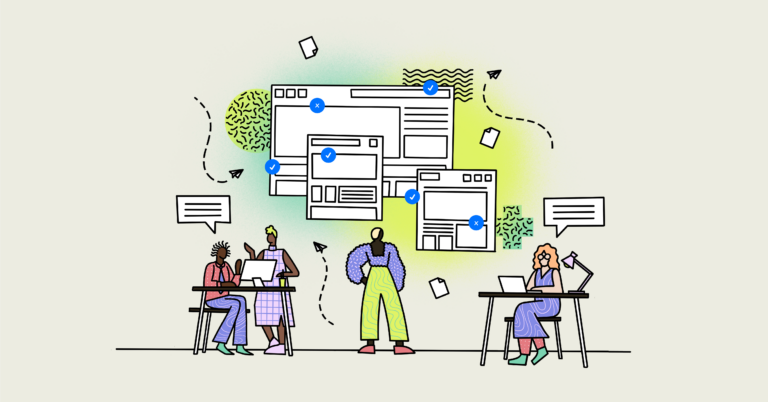Invest in UX workshops and delight your customers with better digital experiences

We often think about what decisions we need to make, but not how we’re making those decisions. Are you running into roadblocks trying to build or improve your digital experiences? Are you sure you’re getting the full picture when conducting research or prioritizing features? Identifying your main focus and getting started can often be the hardest part when starting a product design and development project.
Let’s start off with a simple quiz. Circle each item that applies to the project you’re currently working on or have encountered in the past:
- It’s often difficult to make finalized decisions.
- Everyone’s excited for the new application, but no one seems to agree on what the most important features are.
- Folks says they’re onboard with the redesign, but there doesn’t seem to be much momentum.
- People seem reticent to start whiteboarding or discussing which features stay or go.
- Nothing feels like it ever really gets done.
- People seem enthusiastic for the project but there’s a lot of blockers that keep popping up.
- Something always seems to come up in development that we really should have seen coming.
- You don’t know if you did a good job after things launch.
- You know what your important features are, but you’re not sure your new app won’t run into the same problems your previous design had.
What did you score? If you circled between 1-9 of the above, it might be time to consider a UX workshop.
In this article, we’ll share more about UX workshops including: what they are, what to expect from a workshop, and how it can benefit your team (and product) as you start a new project.
What is a UX workshop, exactly?
Just so we’re clear, a workshop can refer to a wide variety of activities, but we want to focus on its core definition: a facilitated group session with an established agenda and a focus on intensive discussion or activities. We’ll talk about all the different ways these can be run later, but let’s focus on the basic form for now.
Despite its name, a UX workshop isn’t only focused on what we typically think of as user experience—what the user interacts with in your application—though that’s included! UX, when it’s done right, also covers the systems, strategies and processes we follow in order to create the optimal experience, and can help uncover informational gaps and organizational problems along the way.
Those last pieces are easy to forget and easy to ignore… until you’re months into development and have to rebuild major features. And the problem with these problems is that they’re also hard to detect unless you’re working with a UX team that knows how to look for them. One of the best tools for early detection is a UX workshop.
Components of a UX workshop
A workshop is NOT a standard meeting or working session. A workshop has three components that a typical meeting won’t have:
Facilitation
A properly run workshop will have trained facilitators who will work with you beforehand to suit the session to your needs. This allows every critical stakeholder to participate without having to put their own knowledge and input aside. Furthermore, facilitators will know how to guide the discussion down the right paths, keep an eye on the clock, and encourage quieter voices that may not often get a chance to speak.
Focus
Workshops require undivided attention from the participants to be successful—and if it’s done well, you won’t have time to check your phone or email. There may be timed exercises, challenges, or debates, brainstorming or infodumping. No one should be sitting on their hands in a workshop.
Results
It’s not enough to gather data on your project and team—you need to analyze it. Any decent UX workshop will involve a considerable amount of data collection which can then be synthesized by facilitators or trained researchers. You won’t just uncover a lot of valuable information during a workshop—you’ll know what people agreed upon, what they didn’t, and where to go from there.
This may seem like a lot of work—and it can be—but the right team can help with that. Before you start protesting that a workshop isn’t part of your gameplan, let’s talk about what you can get out of one.
What does a user experience workshop do?
A workshop has both immediate and long-term benefits. Any workshop worth its salt will accomplish the following:
Gives your project a direction or helps refocus your current direction
Knowing where to begin can be daunting and many teams find themselves paralyzed at the starting line. A good UX workshop will help your team refine your mission statement and how it applies to your project. If you already feel comfortable in your current direction, a workshop can highlight places where your focus might be wandering or if it’s split in too many directions.
Allows you to plan with your full audience in mind
When a project is in progress, it’s easy to forget about everyone that’s impacted by it; not just users, but the business, the people building the product, and YOU. As strange as it may sound to hear from a UX firm, there’s more than just satisfying your users as the goal. You’re in business and even if happy users assist with your goals, their needs aren’t the only ones you have to think about.
Conversely, if you only focus on the bottom line or personal OKRs, a project is almost guaranteed to tank. A workshop will surface the needs of these groups and help you map out how to keep them in balance moving forward.
Uncovers gaps in your project—what you don’t know will hurt you
You already know what questions you have, or do you? A good workshop team will help uncover gaps across all levels of your project: from research needs to user types to required resources, facilitators can determine what you need to tackle before you set out and what might trip you up during future phases.
Workshops are an ideal format for cross-discipline communication (say, between research, design, and development) that might not be a part of their day-to-day. This can provide valuable insights that a necessarily siloed approach to meetings can’t and allow discipline groups to better understand each other’s priorities and limitations.
Helps you identify who actually belongs on the project
Sometimes it’s hard to figure out who should even be in the room! Any team assisting you with a workshop will have a list of questions to help you narrow down who is truly critical when it comes to the scope of your workshop.
Organizational importance doesn’t always translate to critical either—an experienced developer who knows your backend inside and out is going to be a vastly more important voice than your VP of Sales.
Lets you define what success really means for your project
Most people assume they’ll know success when they see it or how they should measure it. But does everyone on your team agree? Developers, project managers, and directors can all have vastly different ideas for what a successful project looks like, and it helps to nail down what you’re measuring, how you’re going to measure it, and what your goals are compared to how things are performing currently.
Organizational benefits of UX workshops
Any decently run workshop will provide all the things we’ve mentioned above, but a truly exceptional team can also help you with the following:
Makes people feel personally invested and responsible for outcomes
In the right hands, workshops can be the great equalizer. Skilled facilitators know how to bring forth the opinions that aren’t usually heard or that can be drowned out in regular meetings by more opinionated voices. A third-party facilitation team helps create neutral ground and a safe place for people to provide feedback that might otherwise never surface.
Exposes critical hopes and fears that can trip up success down the line
It’s nice to think that logic and reason rule the roost, but feelings can make a project sink or swim. Are you sure the goal of the project is good for everyone in your org? What if it makes a business unit redundant in two years or scales back support for other parts of the company? Scared or uncertain stakeholders aren’t going to get you where you want to go. A truly excellent workshop can uncover these concerns—and potentially provide solutions.
Creates momentum and trust in the organization
A great workshop will leave you and your team feeling energized, better connected to your project and each other, and more willing to openly communicate your goals, needs, and expertise. Making the investment in your project with a workshop shows you are willing to listen as well, which is incredibly powerful for building trust.
So why aren’t you investing in a UX workshop?
In over 20 years of facilitating sessions, we’ve heard every reason under the sun why a client didn’t think a workshop would work for their group. Here are some of the more common concerns we run across:
It’s like herding cats
Yes, it is A LOT of work getting 30 people into a room at the same time with no distractions. Fortunately, not every workshop needs to be grueling, week-long sessions where no one leaves until the problem is solved. Heck, people don’t even need to be in the same room to participate anymore. There’s value to in-person sessions (greater sense of importance and intimacy, potential for spontaneous collaboration) but you aren’t limited to those anymore.
There are a wide variety of tools that improve digital collaboration and exercises that assist with group cohesion. Virtual workshops make collecting data and analysis a snap, and without travel constraints, you can spend more time actually working together.
I’m BORED
Modern workshop design has come a long way. People who are engaged with the subject matter, who are having fun, are going to provide way more information than someone watching the clock. Creative exercises encourage creative thinking, and good facilitators will know if your group would benefit more from a collaborative or competitive approach—or a bit of both!
We don’t have enough time
There’s a belief that you need a full day to accomplish anything in a workshop—which just isn’t true. What matters is that the time is being used well and with purpose. We’ve run fruitful, entertaining workshops as short as two hours long. While a typical session is closer to 4-8 hours, the answer varies as wildly as the specific needs of the client.
A good facilitation team knows your time is valuable and can help you create a schedule that accomplishes what you need without having to compromise on quality.
It’s hard to get people engaged
“No one talked during our previous workshops.”
“Jim wouldn’t let anyone get a word in edgewise.”
Everyone has an opinion, but it can take work bringing them out. People may be afraid of advocating for themselves or their group if they think their needs or opinions don’t align. They may feel jaded from not feeling their feedback is weighted fairly. They may be concerned about the bias of the person collecting the feedback or their opinions.
You could also have the opposite problem: big voices and big opinions that don’t leave room for other ideas. In meetings, it’s very easy for seniority, confidence, or sheer volume to dominate proceedings. But the loudest voices aren’t always right and you need room for quieter voices to speak and a safe way to get that information.
Workshops are the ideal format if you face these issues. Good facilitators know how to watch for trouble and head it off at the pass, making sure people can contribute in an environment where their knowledge is weighted equally.
Let’s talk shop; what you can expect when getting started with a UX workshop
What does the process look like once you decide you’re interested in holding a UX workshop?
Discovery session
This is a pre-workshop session, usually at least a few weeks before the workshop itself. In this session, organizers meet with the facilitation team. The goal of this session is to determine:
- Scope
- Who should be included
- Logistical concerns
- Accessibility and inclusivity concerns
- Desired short-term and long-term outcomes
While the facilitation team may discuss potential options, the key deliverable here is the proposal, which will cover all of the above as well as proposed exercises, a rough schedule, format (virtual vs. in-person, off-site or on-site), and any information or documentation required prior to the workshop.
Personalized design
Once the proposal is agreed to, the facilitators will design the workshop according to the specifications. No two teams are exactly the same so why should a workshop be? The facilitators will make sure that all attendees will be able to fully participate and will work to ensure an engaging and safe experience.
In the workshop
Regardless of the format and duration of your workshop, facilitators will be capturing observations and data, managing logistical concerns (parking, directions, food). There may be handouts, worksheets, or informational packets that will be provided, and facilitators will keep track of the schedule to make sure that all desired topics are covered.
After the workshop: short-term
Depending on the exercises or discussions that took place, there may be immediate actionable items or areas of further research for your team. These will be documented by the facilitators and provided shortly after the workshop concludes. Facilitators will also be regularly gathering feedback to make sure that attendees feel heard, comfortable, and engaged—adjusting additional sessions as needed.
After the workshop: long-term
Your workshop team will provide a readout in any agreed-upon format(s). This readout may be presented by the workshop team if desired or distributed among participants.
A good readout should contain:
- An overview of the workshop goals
- Observations and analysis
- Key pain points and knowledge gaps
- Recommendations for both short- and long-term action
Give me an R, give me an O, give me an I
We firmly believe workshops are an integral part of any project. Where else can you gather so much information over such a short period of time? Where else can you level the playing field between everyone on your team?
A good workshop builds camaraderie, helps set expectations for the future, and gives you valuable insights into both your users and your own team. We’ve seen disjointed, unfocused teams come out on the other side with solid direction, a new outlook on team collaboration, and momentum and trust in their role in their project. And we all know that an efficient and collaborative team can make or break a product build (or redesign).
Now that we’ve given you a full view of what a UX workshop is, what it entails, the blockers that often hold teams back from utilizing them, and the benefits, let’s finish with a quick pop quiz.
Should you be looking into a UX workshop for your next digital project?
- Yes
- Definitely
- Absolutely
Answer: See you soon.



